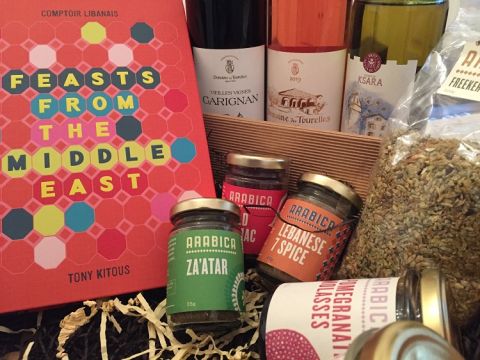17 August 2020 One more Lebanese event added below, the Zoom Town Hall organised by May Matta-Aliah
14 August 2020 From 16,500 Lebanese pounds (2019), £11 (2018), €13.50 (2017)
I was born in 1975. For the first 15 years of my life, Lebanon was at war with itself. Through the medium of BBC radio news, Beirut and the Bekaa Valley were to me nothing more than the front lines of the country’s multi-factional civil war.
But after peace was achieved in 1990 the nation emerged from the dark with hope and energy, rediscovering its place in the world. What had been a clash of cultures became a fusion, with its vibrant cuisine flying the flag for the nation.
Peace also brought investment and renewed interest in Lebanese wine, primarily in the Bekaa Valley – a place with thousands of years of winemaking history and, literally, a monument to wine in the form of the Temple of Bacchus at Baalbek.
There has been both a renaissance of historic estates such as Château Ksara (1857) and Domaine des Tourelles (1868), as well as the creation of new estates, led by Massaya. Today, around 50 producers make 9 million bottles of wine a year, with Ksara making 3 million and Tourelles 500,000 bottles.
While those hardy souls at Chateau Musar, led by Serge Hochar, did manage to keep production going as the bombs and bullets of the civil war fell (so 50 years of Chateau Musar includes war-era vintages such as 1980 and 1989), the industry largely reconstructed itself over 20–30 years.
But on 4 August, the earth-shattering detonation of nearly 3,000 tonnes of ammonium nitrate in Beirut’s key port – devastating the city and killing hundreds – seemed to underline a return to darkness. Recent years have seen significant challenges for the country, amid protests against a corrupt political elite and a financial crisis that has crippled the economy. Madeleine Waters, who has represented Lebanese wines in the UK, this week highlighted in UK wine-trade magazine Harpers the very real difficulties wineries have had with foreign exchange and import controls, for an industry that relies on buying in virtually all equipment: bottles, corks, barrels and so on.
This crisis inspired me to pick a Lebanese wine for my wine of the week today, to encourage us to drink Lebanese, and support producers and their families in this difficult time.
Others in the UK wine trade, including Madeleine, have been looking at ways to support friends and business partners in the Lebanese wine community too, so it’s worth taking a moment to point them out here:
- #BidforBeirut auction: 28–31 August, online auction run by Madeleine to raise money for charities rebuilding Souk el Tayeb and Tawlet and for Impact Lebanon. More information is on the website here.
- Massaya Red Cross offer: with their UK importer Thorman Hunt, Massaya are offering to donate £10 to the Lebanese Red Cross for every case sold.
- QuarantinoVino Zoom tasting: 18.15–19.15, 28 August, Lettie Fardon of QuarantinoVino, who lived in Beirut for three years, is running a Zoom tasting with Lebanese wine samples sent out in exchange for a £30 per person donation, again to the Lebanese Red Cross. Since the time of writing this has become fully booked but you can still donate.
- May Matta-Aliah's Zoom Fundraising Town Hall 12.00 EST (17.00 UK time) 20 August on the current state of Lebanese wine. The $20 registration fee will be donated, in full, to the Beirut Emergency Fund 2020. Register in advance for this webinar here.
A few weeks ago, working with Madeleine, Ksara and Tourelles collaborated to present an innovative, virtual online presentation of Lebanon and the Bekaa Valley, replete with map, cookbook, spices from Arabica restaurants in London and broad ranges of wines from the two estates: white, rosé and red. Incidentally, Jancis had already reviewed these wines, whose tasting notes can be found in our tasting notes database.
Among the whites was an interesting varietal Merwah from Ch Ksara. Looking beyond the slight touch of TCA on the bottle reviewed, this indigenous Lebanese variety had a neutral, minerally, aromatic profile alongside an intense lemongrass flavour that was somewhat reminiscent of Assyrtiko, albeit without quite the same power.
Both producers also showed attractive varietal Carignans from vines more than 60 years old, while Tourelles’ scented, old-vine Cinsault was very appealing, demonstrating what that undervalued variety can do.
But my recommendation is of a rosé: Ksara’s Gris de Gris, made from 60% Carignan and 40% Grenache Gris.
I’m not an enormous drinker of pink, but in the 2018 vintage of this richly coloured, pink-orange wine, I found layers of red-cherry fruit, chilli spice and stony minerality, with decent acidity. This came across in a really appetising, food-friendly style – some za’atar-grilled halloumi, a few falafel and a lamb kebab, perhaps? Jancis’s note on a bottle of this wine she tasted back in April resulted in a score of just 14/20 because it was, sadly, affected by TCA, but I can safely say a clean bottle is a 16-point wine!
And rosé, especially gris, is a style that Lebanon has the ingredients to do well. Its French colonial past has infused its viticultural heritage with an abundance of precisely the Rhône varieties, especially Cinsault and Grenache, that form the backbone of Provence’s rosé industry.
Imported into the UK by Berkmann Wine Cellars, the Gris de Gris 2018 can be found on Wine-Searcher starting at just £11 and is cracking value.
Availability is more limited outside the UK, but there are a number of other Lebanese rosés worth looking out for, including the one from Domaine des Tourelles pictured above, while others from Kefraya, Massaya and Musar all feature in our tasting notes database – with, of course, Massaya’s included in that Red Cross donation scheme.
So, let’s drink pink for Lebanon and raise a glass of hope for a return to brighter times in the country.














